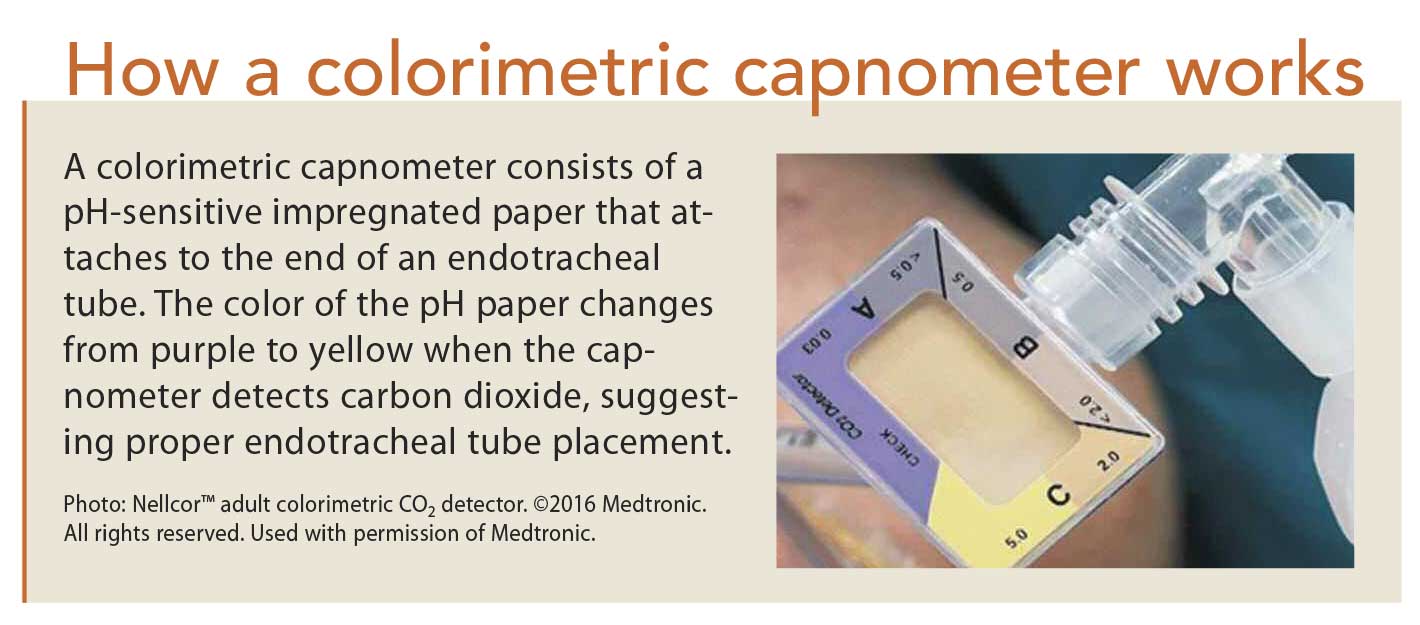

But using the bag valve mask is not effective in tracking how the bag is squeezed and the amount of air that reaches your lings. Patients with a pulse problem are managed with a bag valve mask to provide pressure ventilation. Instant feedback on the working of the treatment An end- tidal carbon dioxide value below 10mmHg shows that the compressions are not quick. Capnography will give details about compression and whether a change in compressor is required. Carbon dioxide can only be produced if your chest is compressed properly. This results in no production of carbon dioxide. If you experience a cardiac arrest, it means that there is no metabolism and circulation. In case of a low end-tidal carbon dioxide and other symptoms of shock, it shows that you have a poor system perfusion which may occur as a result of sepsis or hypovolemia. This offers some details about the circulation of gases around your body. The quantity of carbon dioxide depends on sufficiency of circulation to your lungs. Your body cells utilize glucose and oxygen to produce energy, and release carbon dioxide into the blood which is transported to the lungs. The following are some of its uses 1, 4, 5: It helps detect shockĬapnography has circulatory and ventilator features. 4 Uses of CapnographyĬapnography measurements are useful in terms of health management. This is done according to the carbon dioxide released from the airways and lungs of the patient. The expiratory section is further split into an occasional phase IV and three phases. Time capnography is divided into two vital sections: expiratory and inspiratory. Time capnography is used in medical practice. It is plotted against time waveforms or volumetric capnography. Capnography MeasurementĬarbon dioxide waveforms are represented on a graph. The transport of carbon dioxide to the infrared sensor is slow and it results in delay of measuring carbon dioxide and display of the capnography values. These gases are then transported to the infrared sensor. In side stream sensors, a sampling tube and an adaptor are used to aspirate the gases from your respiratory system. Carbon dioxide is then measured across your air passage. In this kind of sensor, the adapter is put in between the breathing circuit and tracheal tube.

The following are types of sensors 3: Mainstream sensors Infrared technology consists of two sensors named according to the area where the capnograhy is placed. Carbon dioxide values are shown as partial pressure. Advances in infrared technology has made it easy to reduce the response time and boost its accuracy and create high quality capnography waveforms in untimely babies with faster respiratory rates and small tidal volumes. 5īeside carbon dioxide, infrared can measure other gases such as isoflurane and nitrous oxide. Carbon dioxide has two different atoms, thus it can absorb infrared waves. Since oxygen has two similar atoms, therefore it cannot absorb infrared waves. Infrared is absorbed by gases that have at least two different atoms. Infrared waves have a lower frequency compared to light and it is not visible to the naked eye. How it Works?Ĭapnography uses infrared waves to measure carbon dioxide. Carbon dioxide also goes through several steps before it is removed out of the body.Ĭapnography provides measurement that can help detect if there are problems in your body. Once you breathe in oxygen, it is taken by your body cells which utilizes it and releases carbon dioxide as unwanted product. Oxygen goes through several steps in your body before it reaches the body cells. We all know that oxygen is vital for life. These are vital monitoring devices found in wards, ambulances, operating rooms and intensive and critical care 1.

Capnography is an instrument used to measure the amount of carbon dioxide in exhaled air and represents the readings in a waveform tracing.


 0 kommentar(er)
0 kommentar(er)
